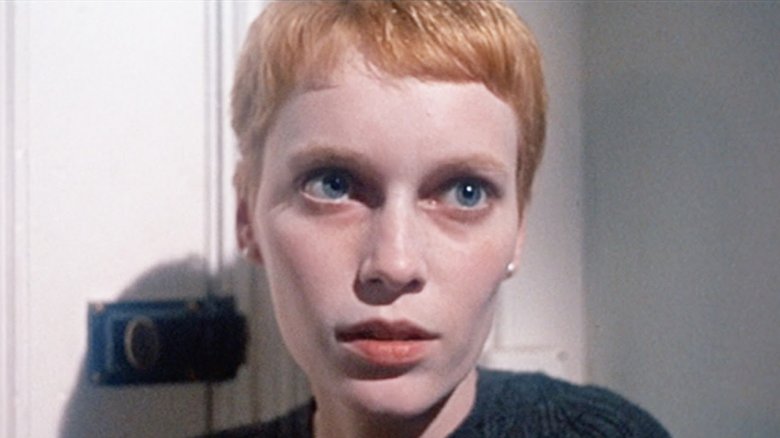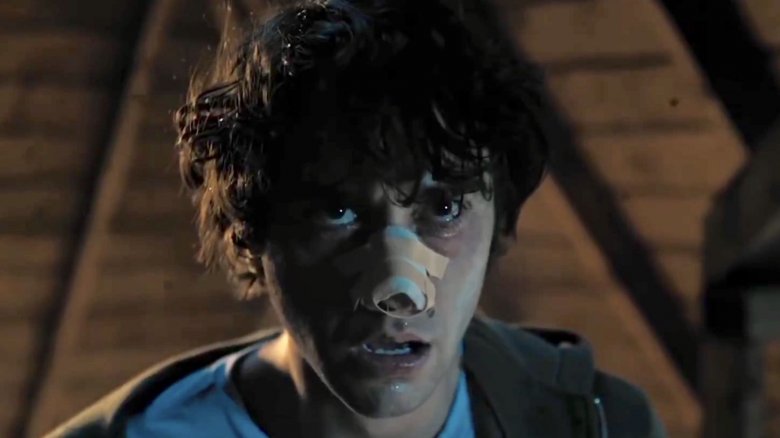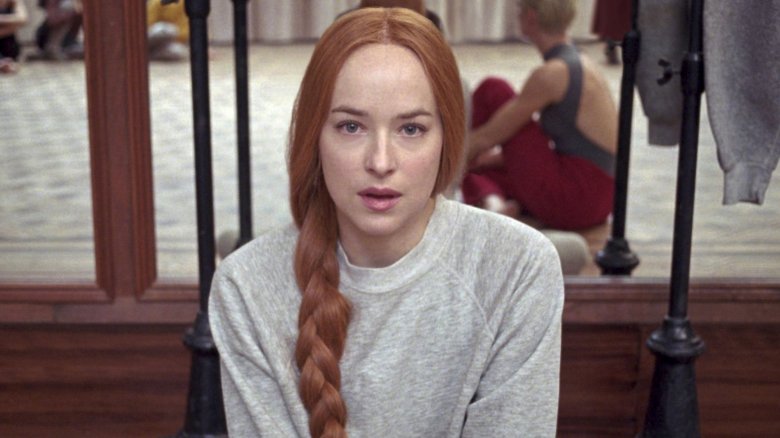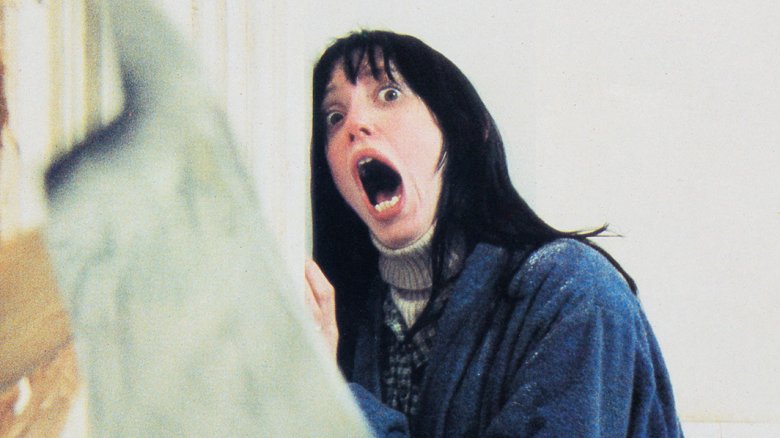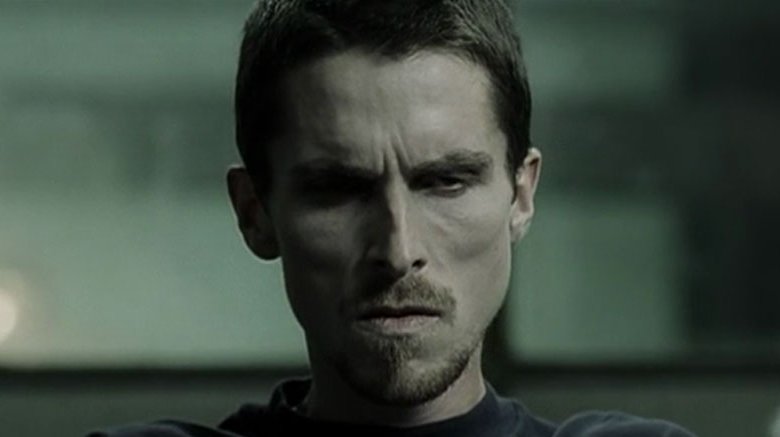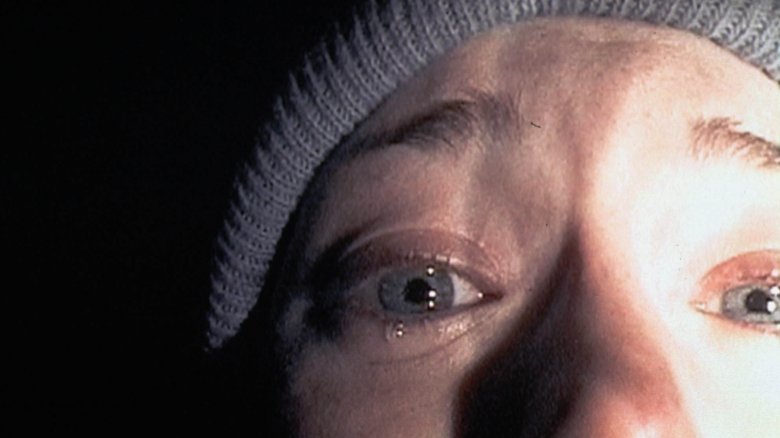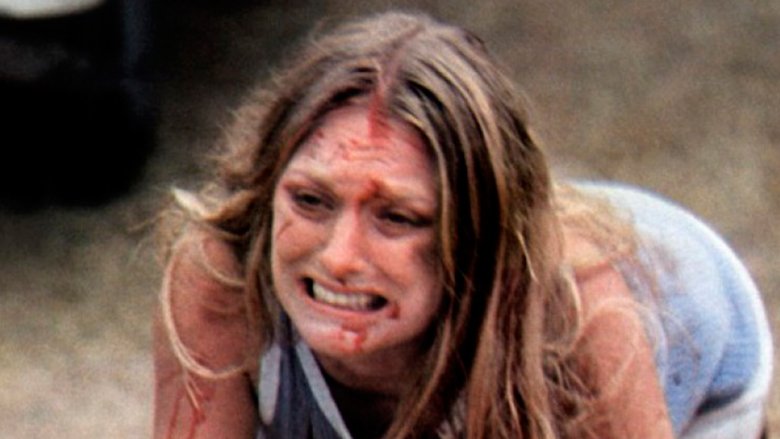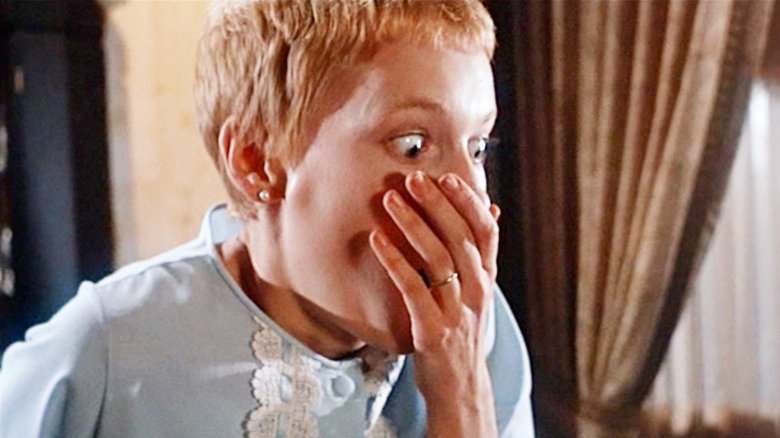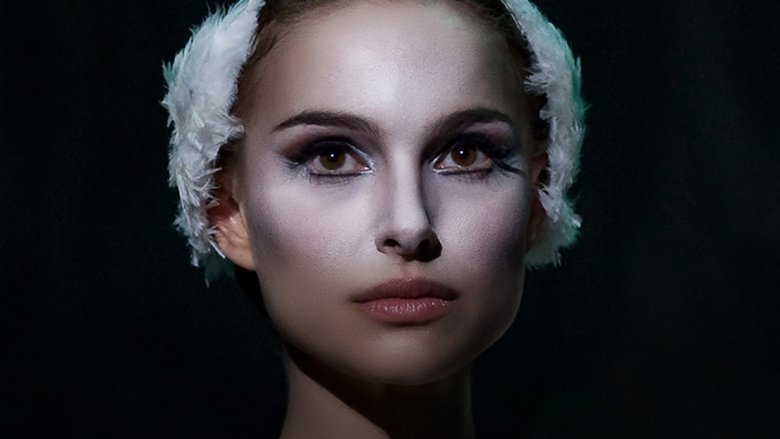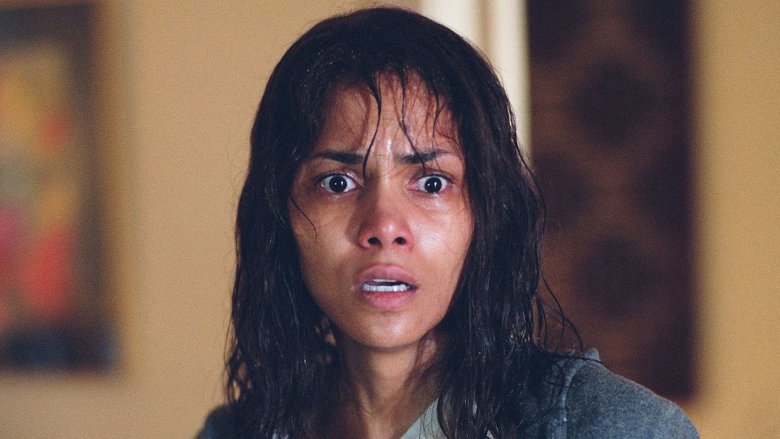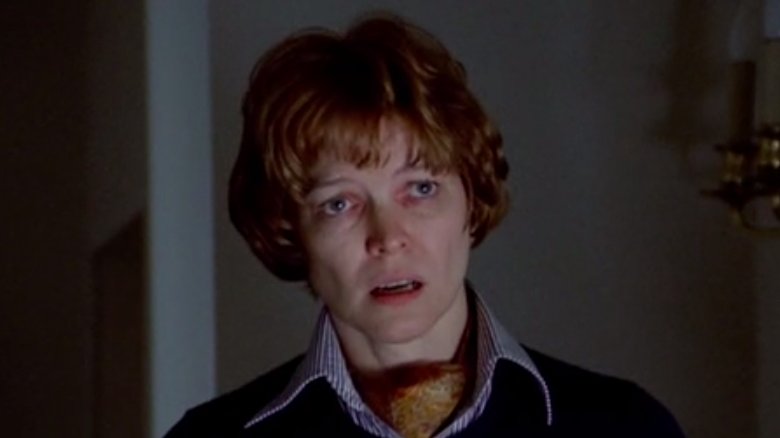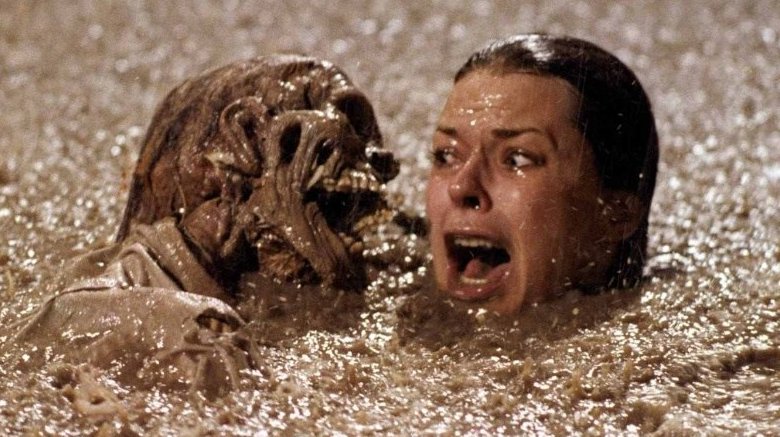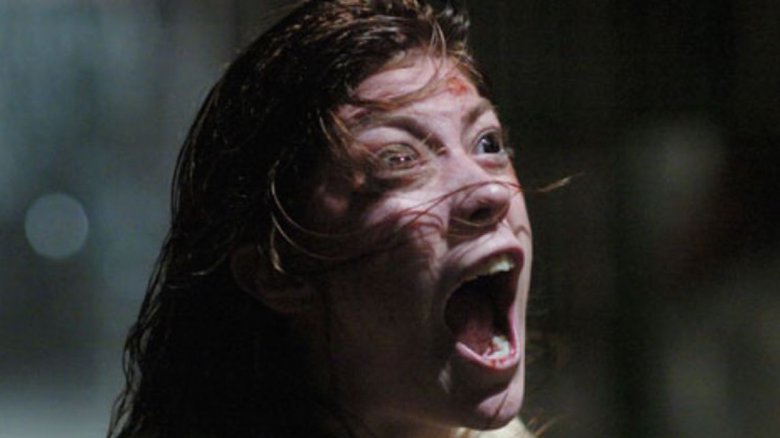Sacrifices Actors Had To Make For Horror Movies
If you're an actor signing on for a role in a horror film, you can expect a certain number of "occupational hazards." These may include, but are not limited to, screaming, being tied up, screaming, being chased by an axe murderer, screaming, pleading for your life, screaming, and of course, screaming. The key element to all of these components, however, is that they are fictional. An actor isn't actually in harm's way when performing these scenarios for our entertainment. But some actors throw caution to the wind, going above and beyond to ensure their performance conveys pure terror. Some actors make sacrifices of health, sanity, and professionalism — all for the sake of delivering the best genre work they possibly can. Were these choices worth it? Are their films' status as classics due in part to the lack of inhibitions from their performances? Do we need to send the police to William Friedkin's house? Check out these horror stars who went too far, and find out for yourself.
PTSD is Hereditary
Can you get posttraumatic stress disorder from shooting a movie? According to Alex Wolff, who plays the perpetually haunted teenager Peter in Hereditary, the answer is a hard yes. He told Vice that during production, he took himself to a place "of emotional masochism to the point of just trying to take in every negative feeling I could draw from... I was very, very isolated in a way that I had never really experienced." During one of the film's more visceral sequences, Wolff's character smashes his head against a school desk repeatedly (as you do when you're being stalked by a demon). Wolff, in a testament to his commitment, wanted to use a real desk. Thankfully, cooler heads prevailed, and director Ari Aster opted for a rubber one instead (though Wolff admitted it still hurt something fierce). But while Wolff avoided permanent brain damage, he still experienced debilitating effects after the shoot. He's suffered from memory loss, not showing up to scheduled shoots, and traumatizing flashbacks of the emotional terrors he went through. So with all this, what's it like when Wolff watches the film? Eerily, he admits to not even remembering shooting the scenes he sees. We have a recommendation for Wolff to chill out: Listen to some old Naked Brothers Band!
Dakota's Suspiria therapy
How do you remake a Dario Argento classic like Suspiria? If you're the star of the remake, Dakota Johnson, the answer is that you commit. Really hard. To, like, an unhealthy degree. As Johnson told Elle, her experience playing dancer Susie Bannion "f***ed me up so much that I had to go to therapy." The shooting conditions of director Luca Guadagnino's punishing descent into madness sound brutal. The primary location was an abandoned hotel, atop a mountain. The weather was perilously dry and cold, resulting in pervasive discomfort among the cast. Plus, due to the 30 telephone poles on the building's roof, "there was electricity pulsating through the building, and everyone was shocking each other." Beyond therapy, how else is Johnson coping with her life post-Suspiria? Personally, she's chilling the heck out with lots of CBD oil. Professionally, she's starting her own production company, hoping to create projects that showcase what she wants to do. And, presumably, have non-electrified sets.
The Shining? More like the screaming
When film critic extraordinaire Roger Ebert asked Shelley Duvall what it was like working with master director Stanley Kubrick on The Shining, Duvall responded bluntly, "Almost unbearable." Kubrick's adaptation of Stephen King's harrowing novel is an acclaimed horror classic, but it arguably came at the cost of Duvall's sanity, who called shooting it "excruciating." For nine months, she put in at least 12 hours a day, screaming and crying, bearing the brunt of Kubrick's artistic impulses (one Hollywood legend goes that Kubrick asked for over 120 takes of a scene involving Duvall and a baseball bat). And after her trials were complete, and the film was released? Critics wrote of the film's genius in every way — except for Duvall's performance. "The reviews were all about Kubrick, like I wasn't there... Perhaps with a star director such as Kubrick, I said, critics get mesmerized by his name and forget the actors." However, despite all this, Duvall did admit to Ebert there was something therapeutic about her psychological ordeal. "There must be something to Primal Scream therapy, because after the day was over and I'd cried for my 12 hours, I went home very contented. It had a very calming effect."
A starving Machinist
We've seen Christian Bale's body do all kinds of things. In the Dark Knight trilogy, he was impressively buff. In Vice, he was impressively thick. But in Brad Anderson's cult psychological thriller The Machinist, Bale went the opposite direction: to play the malnourished, insomniac protagonist Trevor Reznik, he lost 65 pounds. In Bale's biography Christian Bale: The Inside Story of the Darkest Batman, written by former assistant and publicist Harrison Cheung, Bale's daily diet at this time consisted of a cup of coffee, water, an apple, and whiskey. The resulting effect was so shocking, Bale's wife, former model Sibi Blazic, was terrified for his life. "I caught her a few times removing her hand from in front of my mouth as I was waking up; she was just testing for breath," Bale told star 2 . In a twist crazier than the ending of The Machinist, Bale's costar Michael Ironside told HuffPost Live that the dramatic weight loss was the result of an unadjusted error. Screenwriter Scott Kosar wrote the character's weight with his own body in mind, and didn't change it once Bale was cast. "And then Chris did the film and Chris said, 'No, don't change the weights. I want to see if I make them.' ... So those weights he writes on the bathroom wall in the film are his actual weights in the film."
Be-Witched, bothered, and bewildered
In recent years, found footage titles have been a dime a dozen. But in 1999, the manufactured verisimilitude of The Blair Witch Project boomed loudly across culture like a ghost banging on a tent. Sadly, the film's star Heather Donahue, immortalized in her ultra close-up "I'm so scared" monologue, died during production, and was unable to enjoy its success. Except — that was a lie. A purposeful lie, created by the filmmakers and propagated online to sell the film's reality as actual reality. And everyone believed it. In an opinion piece published in The Guardian, Donahue argued that this marketing tactic torpedoed her acting career. "It was the collaborative spirit of production that made my death feel especially violent. It's a strange thing to get no credit where credit is deeply due... While this work became record-breakingly profitable, what we were was dead." The whiplash felt existentially absurd for Donahue, especially during incidents like her used car breaking down underneath a billboard of her own face. Ultimately, however, she credited the experience for allowing "an early rebirth." She went on to work as a nonfiction author and screenwriter, penning a memoir about medicinal marijuana called Growgirl. When the Blair Witch sequel/soft reboot came out in 2016, Donahue had nothing but positive thoughts to share with the new cast.
The Texas actor massacre
Tobe Hooper's exploitation classic The Texas Chainsaw Massacre is steeped in grimy authenticity. It really looks like these poor actors were tied up in a slaughterhouse full of rotted corpses and tortured until they screamed. The reason it looks like this is... well, they were. Marilyn Burns' interview about the film with Terror Trap reads less like an actor's fond retrospective and more like a testimony of war crimes. The dinner scene when she was tied up and taunted? Hooper tied her up and set the other actors mercilessly on her. The heroic moment when Burns escapes by jumping through the window? Burns, uh, jumped through a window (sugar glass, but still). The gag-inducing gore effect of her finger getting cut? That was her actual finger, getting actually cut, by an actual knife. But at least all of those sacrifices read onscreen. You can't smell a movie, yet Burns was forced to act in the sickening odor of dead animals. Worse still, the animals were originally procured and doused in formaldehyde as props, until the actors complained of the scent. The crew's solution? "They had to decide they'd burn them and give them a burial. The smell of burning flesh just enhanced the feeling around the movie. It was awful."
Rosemary's broken vegetarian diet
Ask any horror head to make a list of the top ten genre movies of all time, and they'll likely include Roman Polanski's Rosemary's Baby, a nightmarish work of anxiety and paranoia. This acclaim is, perhaps, a small comfort to lead actor Mia Farrow, who admitted in her autobiography What Falls Away: A Memoir how much stress she put herself under for the work. During a rape scene, Farrow recounted how "a perfect stranger with bad skin and vertical pupils was grinding away on top of me" (Although she does admit the actor had professional courtesy after the shot). When Polanski needed a shot of Farrow wandering through traffic, Farrow wandered through real New York City traffic (Polanski's justification: "'Nobody would hit a pregnant woman,' he laughed, referring to my padded stomach"). And when Farrow's character had to consume raw liver, she performed multiple takes of actual consumption, despite the fact that she was a vegetarian. But Farrow's ultimate sacrifice came at the hands of her then-husband, Frank Sinatra. Sinatra was reluctant about Farrow's commitment to the role, and when she took it anyway, he sent a lawyer to serve her divorce papers. On set. During filming. With no warning. Farrow signed them immediately, and kept working.
Black (and blue) Swan
During a press conference for Black Swan, Darren Aronofsky's fever dream about obsession in the ballet world, lead actor Natalie Portman said she was a "pleasure-seeker," not a "self-punisher" — but based on her ordeals during production, she could've fooled us. "We were doing five hours a day of training that was three hours of ballet and then we would swim a mile and tone for two hours," said Portman, who lost 20 pounds to play Nina. Moreover, despite these intense physical exertions, Portman revealed to David Letterman that Aronofsky wouldn't allow a medic on set. Portman questioned the legality of this; ultimately, after she dislocated a rib halfway through the shoot, Aronofsky allowed for medical attention — but during the actual shot, insisted she stay in character. Beyond the physical toll, Portman also underwent psychological stresses. In real life, she's good friends with her costar Mila Kunis. But in an interview with the Los Angeles Times, Portman said she was forced to keep her distance, and was told Kunis was doing better than her. "Darren would tell us things about each other to try to make us jealous. I think he was trying to create a rivalry in real life between us." Was this all worth it? Perhaps we should ask Portman's Oscar.
She suffered for her art, now it's your turn
Robert Downey Jr. He's Iron Man. He's been the world's highest-paid actor. And he... broke Academy Award winner Halle Berry's arm? That's right — during production on the 2003 horror film Gothika, Downey and Berry were in the middle of an intense scene. Downey was supposed to grab Berry's arm in a certain, choreographed way, but instead, he grabbed it about as wrong as you could grab it — and it snapped. In an interview with IGN, Berry downplayed the severity of the injury, saying "adrenaline was high" and calling it "just a little wrong turn." Downey pointed out the absurdity that, in several other scenes, Berry fought off multiple people at once, but in a one-on-one scene between the two, he left her with a broken bone. The incident happened halfway through shooting, and director Mathieu Kassovitz found it to be a lucky break (no pun intended), as it gave him a chance to prep for upcoming action scenes he didn't have time to plan.
From Exorcist to chiropractor's office
The Exorcist is, to this day, such a full-throated picture of absolute horror, your body might hurt from all the tension carried while watching. But it still wouldn't compare to what Ellen Burstyn went through to play Chris McNeil, the poor mother of a possessed little girl. In one scene, Chris' daughter Regan pushes Chris to the floor, hard. After take one, Burstyn complained to director William Friedkin that the stunt coordinator was pulling a rope tied to Burstyn too strongly. "And Billy said, 'well it has to look real,'" explained Burstyn to HuffPost Live. "And I said, 'I know it has to look real, but I'm telling you, I could get hurt.' And so he said, 'OK, don't pull her so hard.'" Take two rolled, Friedkin called action, and Burstyn was slammed to the floor so hard she suffered permanent spinal injuries. Burstyn suspects Friedkin wanted a good-looking take at all costs. "Billy is one of those directors that is so dedicated to getting the shot right that I think some other considerations sort of fall by the wayside sometimes. He's a brilliant director and I don't want to knock him, however, I did injure my lower back and had to work with it ever since."
The skeletons are heeeeeeere
Poltergeist is riddled with controversy. Was the production really cursed? Did Steven Spielberg really direct it? And why did they think it was a good idea to remake it? All of these questions may never have official answers. But we do know one thing for certain: actor JoBeth Williams, who played Diane Freeling, had a hauntingly miserable time making the movie. In a Reddit Ask Me Anything session, Williams called the shoot "physically very hard," especially the moments when she was dropped into a pool full of a gross, slimy concoction. During one particularly yucky scene, Williams shared the screen with some skeletons. "When we were shooting, I thought the skeletons were fake, I thought the prop department made them. But later i found out they were REAL skeletons bought very cheaply. That really grossed me out." Yes, that's right: Director Tobe Hooper and producer (slash director?) Spielberg tricked Williams into gallivanting with actually dead scene partners. The weird karma seemed to have followed Williams home. When she returned to her rented apartment after a day's shooting, all of the pictures were crooked. So she straightened them. "And the next day, I would come in, and the pictures would be crooked again." Were the set skeletons haunting Williams? Unlikely, as Williams concluded it was a result of her slamming the door when she left.
Emily Rose's Exorcism blackout
When Jennifer Carpenter found out a pivotal scene of The Exorcism Of Emily Rose was going to be filmed in a barn full of hay, she took an antihistamine. Safety comes first, especially when you're allergic to hay. Except she might not be? "I wasn't sure if I was allergic to hay or not, I'm from Kentucky and you would think I would know but I didn't," she admitted to Dread Central. So she took the precautionary medicine and started shooting the scene, which involved lots and lots of screaming. What Carpenter didn't realize was that antihistamines increase your heart rate and thin your blood. These side effects, coupled with the taxing nature of the scene, resulted in Carpenter straight up fainting. "I came to and opened my eyes and I didn't know where I was or who anyone was," she recalled, "so I took a breather and started up again." While her work ethic is admirable, she still feels traumatized by the experience.
